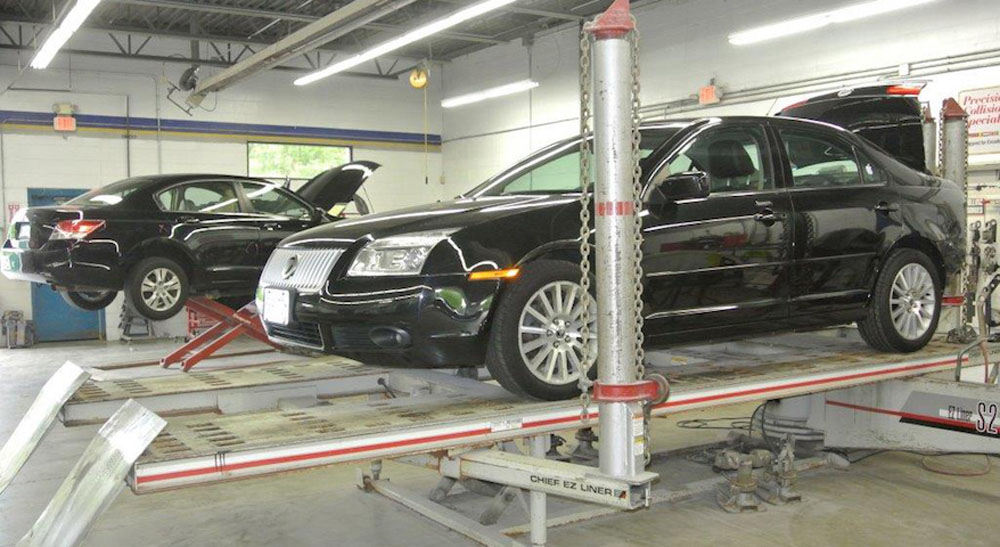
It may be helpful to understand why cars have trouble starting in cold weather so that you can prevent such issues in the future. Cold weather can make driving hazardous and your car problematic. Read our winter driving tips guide for tips on how to prepare. Listed below are four reasons why cars have trouble starting in the winter:
- Because of the slower chemical reaction when it’s cold, car batteries produce less electrical current. Warm batteries produce more power than cold batteries, so cold batteries can have starting issues.
- It’s harder for engine oil to flow around an engine when it’s cold. Therefore, it is harder to pump through the engine block, placing additional strain on the battery. A low battery can result in a nonstart if it is already low on power.
- Fuel lines can freeze if moisture gets into them, causing a fuel blockage that prevents the engine from starting. The fuel lines are particularly susceptible, as they are thin and easily blocked by ice. In addition, diesel drivers should remember that diesel “gels” in the cold, which means the engine will take longer to start.
- Those who drive older cars equipped with carburetors are more likely to experience starting problems with the fourth reason. The small nozzles on carburetors, which can become clogged and prevent moisture from evaporating, cause them to be prone to freezing in cold conditions. Modern cars don’t have carburettors, so if yours was built in the last 20 years, you shouldn’t worry about it. However, be aware that a classic car’s carburettor can cause problems.
How to Start the Engine
Turn everything off
You should turn off all your standard electrical accessories such as headlights, heaters, and radios before starting the car in order to give the battery a better chance at starting the engine. Let the engine run for a while before turning any of these accessories back on, otherwise you might kill the battery again.
Check your battery leads are clean and tightened
Under the hood, look closely at your car battery’s cables. If you see signs of corrosion, such as salty, crusty material, then you need to clean the battery so it works well. Put on protective goggles and gloves before you disconnect the battery cables (negative first) and use baking soda and water to clean the cables. Connect the negative cable last when replacing the cables to avoid electric shock.
Whether your cables are corroded or not, it’s still a good idea to check their tightness, as loose cables can interfere with the flow of current. Tighten the clamps before trying the ignition again if they are loose.
Fill up your engine oil
When you try to start your engine, does it seem like it is having a hard time turning over? It might be because your engine oil is low. When your oil is low, your battery has to work harder to start your engine, and if your battery is cold or not in great shape, then you’ll never get started. Make sure there is enough oil in the engine before you try to restart it again. Use a dipstick to check oil levels and, if necessary, top them up.
Jump start
Whenever all other options have been exhausted, this should be the last resort. Unless you know what you’re doing, you shouldn’t use your car’s jump leads if you don’t know what you’re doing and you don’t have jump leads.
It is worth trying if you can find a good Samaritan with a running car to help you if you are experienced at jump-starting.
Both cars should be in neutral with the engines off. Attach the red jump cable to the positive terminal on your car’s battery and the positive terminal on the battery of the other car. Attach the black jump cable to the negative terminal on the battery of the other car and to an unpainted metal surface on your own vehicle. You should then start the other car’s engine and let it run for a few minutes before starting your own.
Sadly, if this doesn’t work, it’s time to contact that car service.
Preventing non-starters in the future
The idea of dealing with this nightmare in the morning when you’re already stressed about getting your kids to school and arriving at work on time is too much to handle. You may be able to keep on the road this winter if you follow these tips.
Replace your battery
If your battery has been acting up lately, you might consider taking it to the garage to get it replaced. While it’s an unwanted strain on your wallet, it’s worth it to prevent potentially more costly breakdown calls each time your weary battery dies on a cold, winter morning. An annual battery health check ensures that terminals are clean and leads are secure.
Keep your gas tank topped up
Unfilled gas tanks mean a stationary car, but did you know that starting a cold car first thing in the morning uses 40% more fuel? If you’re driving home tomorrow evening from work and you notice that your fuel tank is looking a little low, it would be a good idea to fill it up before you park it up for the night, or you might find yourself short of fuel the next morning.
Use the right oil
There are sometimes different engine oils you can use, especially when it’s cold outside. If you’re not using the right oil for cold weather conditions, consult your owner’s manual and buy some new oil.

